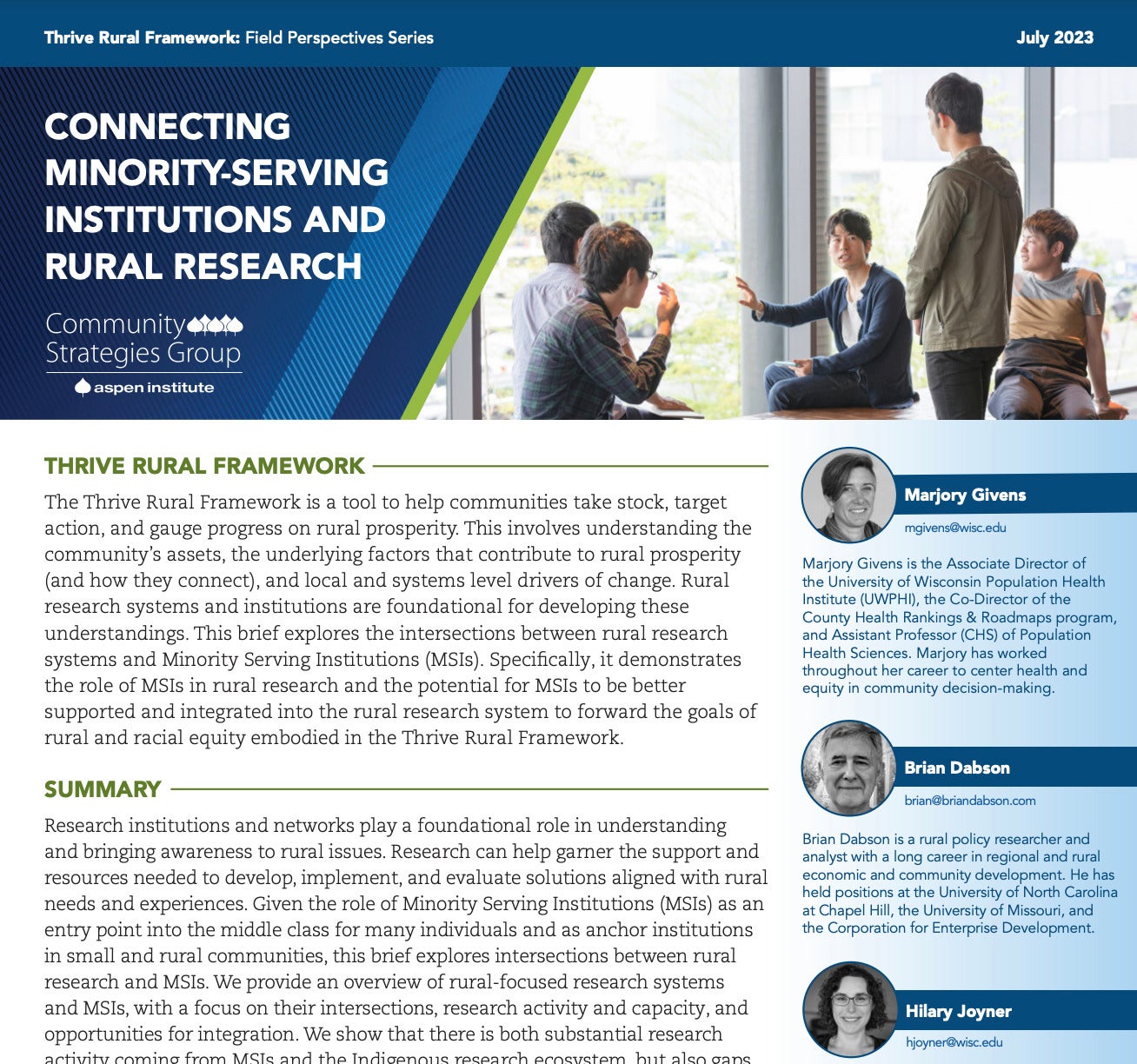When Edj Cadet, a Haitian American living in Fort Lauderdale, was in high school, she knew exactly where she was headed (toward nursing, an in-demand career with good pay) and how she’d get there (via an associate degree from a community college). “I had this whole thing planned,” she said. “It’s not like I’m going with the flow.”
Just as she’d laid out, Edj is now working full time as a hospital nurse, a job waiting for her upon graduation, and she’s headed toward a bachelor’s degree in 2020.
Yet simultaneously, research shows, employers in STEM fields such as manufacturing, technology, and health care are concerned about how they’ll fill jobs in the years ahead—jobs with strong wages and promising futures. As experts in workforce development and higher education conceive ways to bridge this gap, it is crucial to understand the ways colleges themselves can contribute to these inequities, and the ways that excellent colleges remedy them.
Since 2015, the Aspen Institute College Excellence Program and the Siemens Foundation have honored excellent college programs that are moving students into in-demand STEM fields. In the year ahead we are refocusing this prize on not just excellence but also equity. The Excellence and Equity in Community College STEM Award will honor eight programs across the country that are succeeding in reaching and supporting underrepresented student populations on their way to promising careers.
At Aspen we’ve spent the last year and a half conducting research into the gap between potential and opportunity. By improving the quality of their programs and supporting a more diverse student body to succeed in them, colleges will open opportunities for underserved Americans and help employers expand their talent pipelines—a necessity if companies are to succeed in the years ahead.
Why are community colleges crucial to this equation? For low-income students and students of color, community colleges are the on-ramp to education. About half of Black and Hispanic students start their education at community college, and two-thirds of community college students have family income below $50,000.
Yet community colleges aren’t doing all they can to ensure that these students have equitable access to the programs that are going to lead to the best-paying jobs. According to the Georgetown Center for Education and the Workforce, two-thirds of U.S. income inequality can be explained by inequities in access to college programs with the highest labor market value. For instance, Black students are overrepresented in college and apprenticeship programs that lead to the lowest-paying jobs.
There are several points along the way where some community colleges are innovating in promising ways. Through community partnership and thoughtful communication, they reach out to populations in their areas who are underrepresented at the college and could most benefit from upward mobility. They ensure they are offering the proper supports—in schedules, locations, financial aid, transportation, and program design—to make college feasible and flexible. They structure advising and program selection processes to remedy the fact that many students don’t even know the good careers available to them, and what it will take to get there.
Edj is lucky to have gone to Broward College, which takes concrete steps to ensure that its programs preparing students for STEM careers are not just excellent but equitable. Because its program in nursing was producing graduates who were disproportionately white, Broward developed a multipronged approach to diversify the program, and in turn the region’s nursing corps.
College leaders reached out to community-based organizations and high schools that serve diverse populations to raise awareness about the need for nurses and what Broward’s nursing program entails. They built an onboarding process for health sciences students that engaged them early with hands-on learning. They integrated math tutoring into classes to support students whose K-12 education might not have prepared them sufficiently.
These efforts have borne fruit: 78 percent of Broward’s nursing graduates in 2015 were people of color, and 63 percent came from low-income backgrounds.
This work isn’t easy. Educators need to better connect K-12 and postsecondary systems to ensure that all students have the math skills they need to make STEM pathways a realistic option. Colleges have to expand community outreach, with the understanding that aspirations can expand and contract depending on the information people have access to. Employers must collaborate with, and contribute time and resources to, colleges to ensure that lower-wage workers have the opportunity to gain the right new skills. Colleges have to examine whether they have program leaders and faculty who represent the diverse backgrounds of the people they hope to engage.
By identifying, researching, and sharing what we learn about their innovations, we believe we can help both colleges and employers make pathways to great careers more equitable—to ensure that when it comes to jobs with good wages, opportunities really are available to all.

